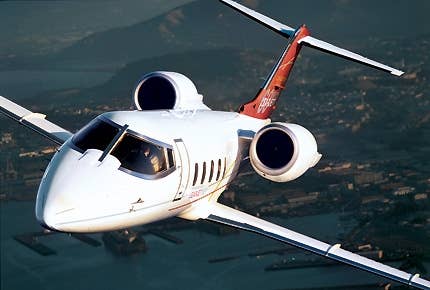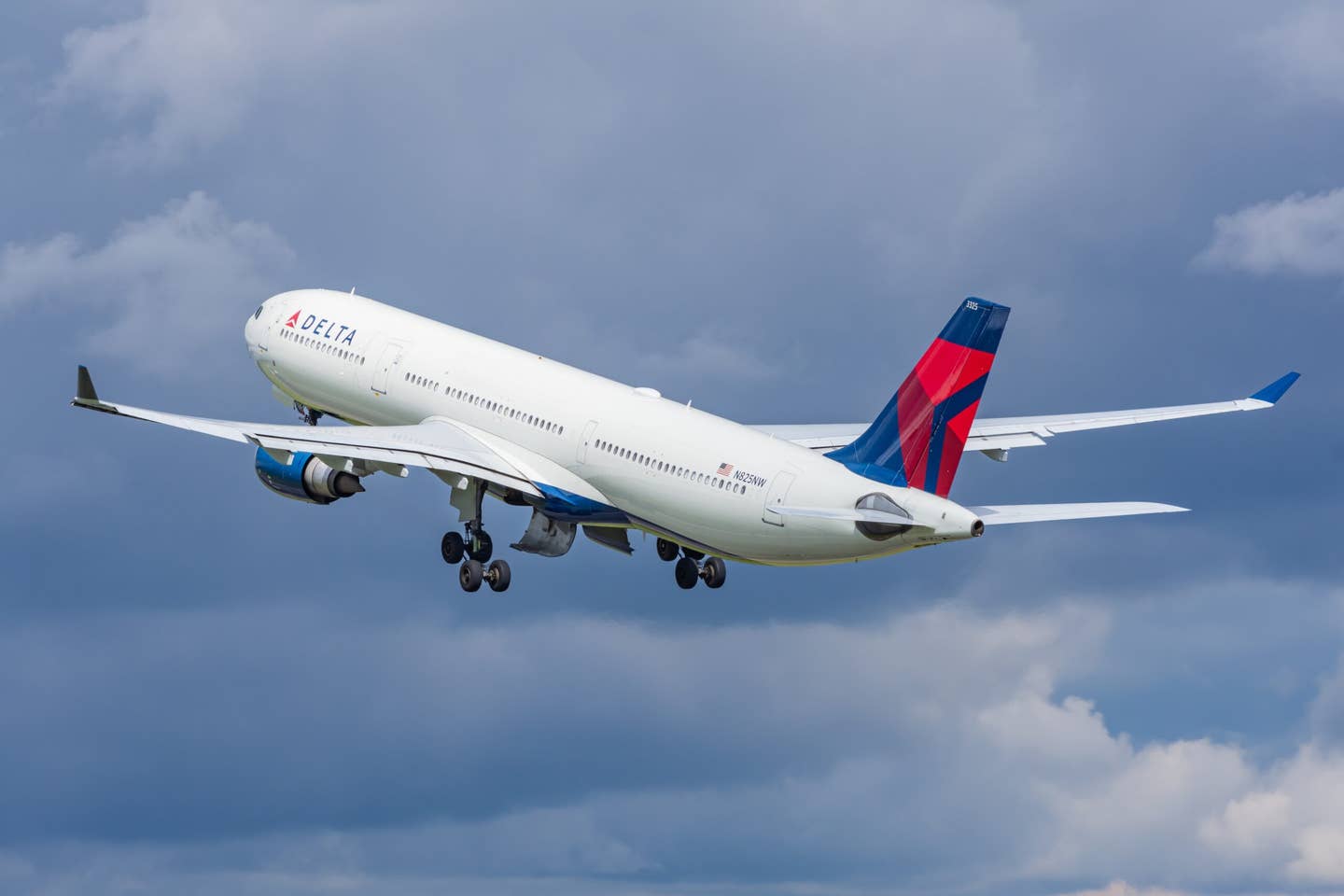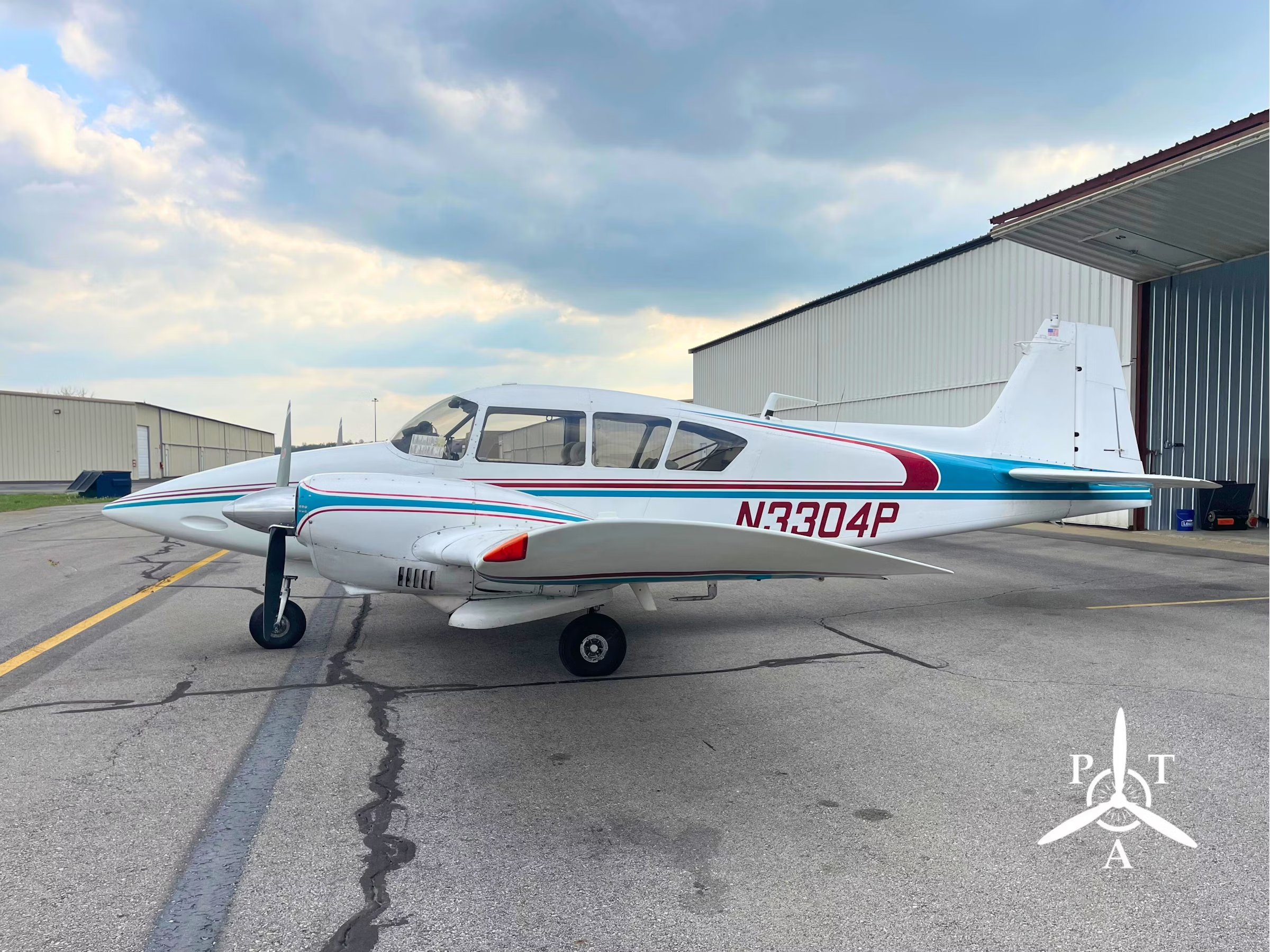
Bombardier Learjet 60 XR
In aviation we admire fat logbooks of experience for both pilots and airplanes. New technology offers promise, but a successful history breeds confidence. And that's what the new Learjet 60 XR exudes -- confidence that you are getting the best of more than 40 years of Learjet heritage.
The 60 XR is a refined version of the Model 60 Learjet that was first introduced in 1993. The XR version has a supremely capable Collins Pro Line 21 flat glass avionics suite and a nicely restyled interior, but most importantly, it is at its core faithful to the original Learjet. And it is the last airplane that will carry the DNA of Bill Lear's Model 23, the airplane that many call the first business jet. Though the 60 XR will most likely remain in production for years, it is the last evolutionary step possible under the rules.
The 60 XR is much, much bigger than the first Learjet, but the family resemblance is unmistakable. The pointy nose, wraparound windshield, T-tail, short and stout landing gear, and most importantly the wing, are all easily recognizable as growth versions of the family founder. And the 60 XR's performance is familiar with very rapid climb rates, good cruise speed and excellent fuel economy.
The most fundamental link of the 60 XR to other Learjets that came before is the wing. It is the same eight-spar, thin section, slightly swept design that Bill Lear adapted from a Swiss military trainer in the early 1960s. The wing has eight spars and thick skins because, well, the military planned to put some stress on it. And the wing needs lots of spars and thick skins because it is so thin. A thicker wing with tall spar webs can be structurally more efficient, but nearly 50 years ago when it was designed nobody knew how to make a thick wing operate when flying at Mach .80. And performance was what Lear wanted, and the wing delivered.
Over the decades the wing has been stretched twice. The first was in the 1970s when the Garrett 731 turbofan engines were installed to create the Model 35. About two feet of wing was added outboard of the ailerons on each side. A few years later Learjet was the first business jet maker to use tall winglets when it created the Models 28 and 29 with the "Longhorn" wing that stretched the span nearly another four feet. The 60 XR flies on that Longhorn wing that is, like the rest of the airplane, still built at the original Learjet factory in Wichita.
The first Learjet wing did deliver performance, but at the price of unpredictable stall characteristics. The airplane had a stick pusher to prevent pilots from actually reaching an aerodynamic stall before the pusher automatically shoved the nose over. But, like the rest of the airplane, the wing has been refined over the decades. A new subtly reshaped leading edge, boundary layer energizers along the upper surface, shark teeth vortex generators, stall fences and even alternating round head and flat head screws on the leading edge have all helped transform the Learjet wing into a steady and predictable performer at all airspeeds. The stick pusher is gone along with the sometimes bad habits, but the incredible strength of the wing remains.
The windshield on the 60 XR closely resembles those on early Learjets, but it, too, is vastly improved. Yes, hot bleed air is still available to prevent ice formation, but the 60 XR windshield is electrically heated to prevent fogging, a big issue on the early airplanes. And though the electric elements are not quite powerful enough to remove the worst possible ice as required by certification, 60 XR pilots will almost never need to use the bleed air to keep ice off.
Though the core structure and design of the 60 XR hark back, the cabin and cockpit do not. The cabin features 5-foot 8-inch headroom, a wide aisle with enough room to easily move about, and there is a large, and private, potty in the rear, luxury never imagined in 1964. And the flat-panel displays of the Pro Line 21 system powered by dual flight management systems (FMS) delivers the latest capability in precision and safety.
The Learjet 60 is actually an evolutionary version of the Model 55 that was introduced in 1981. The 55 was the first Learjet with enough cabin room to stand up, and first to have a real lavatory. In 1993 Learjet introduced the 60 with a stretched cabin and new, more powerful Pratt & Whitney 300-series engines. Both range and cabin space moved the 60 solidly into the midsize business jet category.
The 60 has been a success with more than 300 flying, but its Pro Line 4 avionics -- one of the early electronic flight instrument systems (EFIS) -- was no longer cutting edge, and the cabin design and materials were due for an update. For the 60 XR the company created new floor plans that provide options on locating the galley and the three-place divan. There is also a layout that has six individual seats and no divan. A window was added in the lavatory to give it natural light, and fixtures were updated. The galley can be large or small. The seats are redesigned to fold flat to make berths. And all lighting is now from LED, and cabin lights and entertainment systems can be controlled by touchscreens at the seats.
The Pro Line 21 PFDs feature full-width attitude display. The MFD can be windowed to present a huge variety of information. And the Collins file server unit stores and displays charts so that, with a second unit installed, the 60 XR can be a "paperless" airplane.
But the real attraction of any Learjet has always been performance, and the 60 XR still has it and it is a kick to fly. Since the mission was to have fun and show off the airplane, there was only 3,000 pounds of fuel on board, well under half of the 7,910 pound capacity. But then full tanks will carry you more than 2,200 nm, enough to cross the United States, at least eastbound. With one passenger on board we weighed 18,500 pounds for takeoff compared to the 23,500-pound certification limit.
The P&W 305A engines are managed by fadec so, with those computers in charge, all the old stuff of looking for certain rpm on start-up or setting a fan speed for takeoff are gone. The computers manage the start after you press the button, and for takeoff you just put the levers in the detent marked takeoff. A number of business jets have automatic power reserve (APR), which allows the remaining engine to put out a little more thrust after an engine failure on takeoff. The 60 XR has APR, but it can be pilot controlled as well as automatic after an engine failure. For example, if you encountered extreme wind shear and needed to go around, pushing the power levers hard puts them in the APR detent and you get extra power from both engines. APR will probably never be necessary, but it's there if you need it.
Learjets have always had an electrically operated nosewheel steering system and the early versions were overly sensitive. Not so with the 60 XR where a computer alters the sensitivity to match your taxi speed. As speed increases, pedal movements command smaller and smaller nosewheel deflections. But at slow taxi speed you can pedal the nosewheel around 60 degrees to spin the airplane into a parking spot. And unlike older Lears where you turned off nosewheel steering at 80 knots on takeoff, the 60 XR system is full time.
Runway speeds on newly designed business jets keep coming down, but the Learjet still likes to go fast, even on the pavement. At our fairly light weight with temperatures a little below standard, rotation speed was 127 knots and V2 engine-out climb speed was 134 knots. Balanced field requirement was 3,600 feet, so you can see that the 60 XR was going to blow through those V-speeds very quickly. And it did. The sensations were all familiar to the many other Learjets I have flown, particularly the 5,000 fpm initial climb rate. With an assigned altitude of 3,000 feet I had the power back nearly to idle to both level and stay below the speed limits.
The controllers cut us loose quickly and in nine minutes after takeoff we were passing through 37,000 feet on the way to FL 410, the ancestral home of all Learjets. Nearly every business jet can make 41,000 feet these days, and its now common to see airliners at that level, but it was Lear country first. We got there in about 13 minutes, and even after a maximum weight takeoff the 60 XR can get to FL 410 in about 18 minutes, which no other business jet can exceed at maximum weight.
Learjets were once "fingertip" airplanes at high altitude with small aerodynamic margins between high and low speed boundaries for the ham-fisted pilot, but that is ancient history. The 60 XR is rock solid at FL 410 with no requirement for a yaw damper. I racked the airplane around in a steep turn and pulled back to hold altitude and there was no buffet or complaint from the wing. Evolution is a good thing.
The 60 XR is a fast airplane in the midsize category with a typical cruise speed of between 430 and 450 knots, but others have caught up and even passed it in top speed. But what no other airplane with this much cabin can do is go as fast for the fuel. With power set for normal cruise at FL 410 the true airspeed settles down on 430 knots, but total fuel flow was only 1,100 pounds per hour. That is the kind of burn you expect to see in a light jet, not a midsize. Learjet claims up to a 17 percent fuel burn advantage over some other midsize jets, and that seems believable.
Back down out of positive control airspace I tried a clean stall just to remind myself how well behaved the 60 XR wing really is. With full power at the stick shaker stall warning the 60 XR buffeted a little and flew itself out of the stall. Low speed behavior just isn't an issue anymore.
The first notch of flaps can come out at 250 knots indicated so airspeed management in the terminal area is no problem. Landing gear and approach flaps are limited to 200 knots. Even full landing flaps are 165 knots, significantly higher than in earlier models. Typical approach speeds are 132 or a few more knots. The 60 XR is the only midsize business jet that I know of that has autospoilers that you arm for takeoff and landing. When the main wheels spin up on touchdown, or the squat switches detect weight on the wheels, the spoilers pop up automatically. All large airplanes have this feature and it reduces pilot workload while helping to keep the airplane on the runway after touchdown for maximum braking.
The 60 XR is an easy airplane to land, though the actual greaser may be elusive because the little main gear tires are inflated to 206 psi. But those hard tires resist hydroplaning, and the airplane has very good brakes. A third rotor was added to the 60 XR brakes, which doesn't necessarily make the brakes more powerful, but does improve brake life significantly. Out of a single-engine approach, which is flown to landing with only approach flaps, I was able to turn off the runway in 4,000 feet. Not bad for a pilot with rusty Learjet skills.
The heritage of the 60 XR certainly gives pilots and passengers confidence in the airplane, but the experience of the airplane and the people who build it also equals reliability. Learjet has recorded a 99.6 percent dispatch reliability for the 60 series, and expects that to grow to 99.7 percent with the XR. And with some modifications to maintenance procedures the airplane availability time is also increasing. Combine simplified maintenance with low fuel flow and high efficiency, and the 60 XR claims the lowest direct operating costs in the midsize category.
The Learjet 40 series, and in a few years the all-composite construction Model 85, will continue to carry the Learjet name into the high flight levels for probably more decades to come. But the 60 XR is the final refinement of the "real" Learjet. Bill Lear had a greater imagination than anybody, but I doubt even he could have envisioned what his little rocket Lear Jet 23 has grown into.

Sign-up for newsletters & special offers!
Get the latest FLYING stories & special offers delivered directly to your inbox






